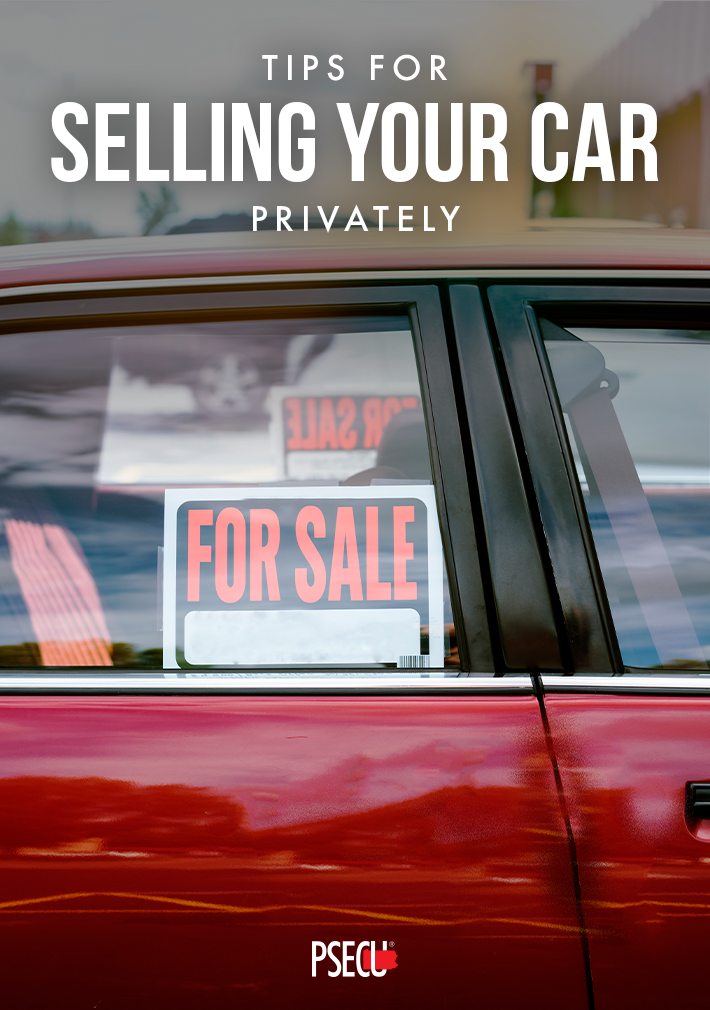You can sell your car to a dealership and put the car’s trade-in value toward a new vehicle, but if the dealership isn’t willing to pay what your car is worth, this approach may not make the most financial sense. You could potentially make more money by selling the car yourself.
Use the car-selling tips below to determine asking price for your car, reach the right potential buyers, and follow through on the sale for a successful transaction.
Determine the Value
First, look up your car’s value on a reputable pricing site. You’ll need to know the make, model, and year of the vehicle to get an estimate, as well as give an honest rating of the condition of your car. You can get a ballpark figure of the amount your car may be worth based on this quick research.
Then, scan local online and print ads. See how much people are asking for similar cars. You’ll want to set your asking price above the amount you actually want to receive for the car. This allows some wiggle room if interested buyers want to haggle.
Once you’ve determined your asking price, you’ll need to get your car ready to sell.
Gather Documentation and Records
Whoever buys your car wants to know they are getting a reliable vehicle. If available, gather your service records together so you can present them to the potential buyer. This includes information on routine oil changes, maintenance, and state inspections. You want to prove you’ve taken good care of the car. Put copies of all the records in a folder and arrange them chronologically so it’s easier for the buyer to evaluate the car’s history.
Ensure a Clean Bill of Health
Get any outstanding issues taken care of, such as faulty windshield wipers or scratches. If there’s a bigger issue, such as tires needing replaced or a speaker needing repaired, determine if replacing them will get you enough of a return on the sale to be worth it or if you should sell the car as is. Whether you replace them yourselves or sell as-is, be honest with the buyer so they know the current condition of the car and if anything needs to be fixed after they purchase it.
Clean and Detail
A messy car won’t look very desirable to a potential buyer. Clean the windows, vacuum the floor mats and upholstery, and give your car a wash and wax.

Take Pictures
Once your car sparkles and the inside shines, it’s time for a photoshoot. You want as many flattering pictures as possible of your car to draw in buyers. Take photos on a sunny day and be sure to capture the car’s interior and exterior. Also get some shots of your odometer, engine, and tires.
Post an Ad
Finding the right buyer takes patience and the right ad. You’ll want to advertise in multiple places, such as your local newspaper as well as online destinations, like classified ad sites and neighborhood social media apps. Add your photos to give buyers a good representation of your car.
When posting the ad, include the make, model, and year of the car, as well as any upgrades. List the asking price and mileage.
Screen Potential Buyers Carefully
A car ad can generate several responses, especially if buyers consider it to be a good deal. Give yourself a day or two to consider all offers. Scammers often target online ads, so use your judgment to determine which responses seem legitimate and which could be the set up for a scam.
Get in touch with potential buyers to discuss details. Phone calls will give you a better idea of whether the buyer is serious and allow them an opportunity to ask questions about your car. Be sure to do your own research on how to safely prepare for allowing your car to be test driven.
If the potential buyer asks if their mechanic can look the car over, agree so on the condition that they pay for the inspection and that you get a copy of the report.
Making the Deal
If the potential buyer decides they want the car, it’s time to talk money. Don’t rush through this. Make sure you both understand the terms. Get any agreement in writing so that both parties are on the same page.
At time of payment, don’t accept a personal check. You want cash or a cashier’s check.
If you still owe money on the car, you’ll need to settle your loan at a credit union or bank before getting the title, which you can sign and date in the presence of a notary to hand over to the buyer.
Sure, selling privately is more time-consuming than just going the trade-in route. But you can potentially get more for your car with a private sale. And after the successful sale, you can relax, knowing you made a very smart money move.
Want to learn more savvy money management skills? Check out our WalletWorks page.
The content provided in this publication is for informational purposes only. Nothing stated is to be construed as financial or legal advice. Some products not offered by PSECU. PSECU does not endorse any third parties, including, but not limited to, referenced individuals, companies, organizations, products, blogs, or websites. PSECU does not warrant any advice provided by third parties. PSECU does not guarantee the accuracy or completeness of the information provided by third parties. PSECU recommends that you seek the advice of a qualified financial, tax, legal, or other professional if you have questions.
